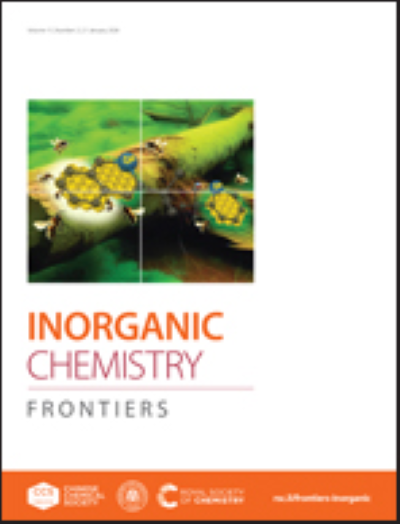Superacidic Aluminum Azido Species: Precursor to Triazolyl Dimers, Trimers and Tetramers
IF 6.1
1区 化学
Q1 CHEMISTRY, INORGANIC & NUCLEAR
引用次数: 0
Abstract
The aluminum-azido species (Me3SiN3)Al(C6F5)3 thermally converts to [(C6F5)2Al(-N3)]2 2. Further reactions with Me3SiN3 afforded [(C6F5)2Al(-N3)2]3Al which contains an unique four Al centers bound to six bridging azides. Compound 2 is shown to be a Lewis superacid both experimentally and theoretically, forming dimeric products in reactions with diphenylphosphine oxide or tetrahydrofuran and a monomeric adduct with an NHC donor. Compound 2 also undergoes “click” reactions with alkynes to give dimeric, trimeric and tetrameric products depending on the nature of the substitution on the alkyne, whichh demonstrates the ability of the reagent to control the nature of the agregation.求助全文
约1分钟内获得全文
求助全文
来源期刊

Inorganic Chemistry Frontiers
CHEMISTRY, INORGANIC & NUCLEAR-
CiteScore
10.40
自引率
7.10%
发文量
587
审稿时长
1.2 months
期刊介绍:
The international, high quality journal for interdisciplinary research between inorganic chemistry and related subjects
 求助内容:
求助内容: 应助结果提醒方式:
应助结果提醒方式:


